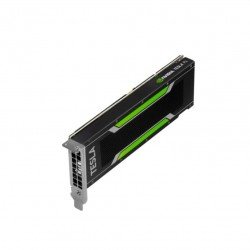Those who are not technologically are often confused and feel that they've heard a wrong term, but you've got the right word, but it's not the CPU but its Server Graphics Card.
Let me tell you that Graphics Card is a shorthand for Graphics Processing Unit.
In simple terms, Graphics Cards appear like a regular chip; however, inside is a variety of hundreds, thousands, or dozens of computers (or "Server Graphics Card Cores").
They operate in parallel, which is the primary reason that Graphics Cards perform so much quicker than CPUs when it comes to processing images.
Graphics Card has hundreds of tiny computing cores that can get the job done more quickly than most large cores.
What is a Server Graphics Card?
The primary function of a graphics card is to render images. If you don't have a graphic card, your computer will not display any data and even function as you want it to.
To make things easier, you need to know that the Graphics Card receives information from the processor and uses software to determine the dots on the screen.
Types of Graphics Cards
Different computer models have a wide range of needs. That's why there are a variety of graphics cards.
Here's what you should be aware of about dedicated, integrated as well as workstation-based graphics cards.
Integrated Graphics Cards
Dedicated Graphics Cards
Integrated Graphics Cards
For machines that need to do basic tasks, such as web browsing or word processing, Some processors have built-in graphics cards.
If integrated graphics are used, the monitor is plugged straight into your Server Motherboard.
Integrated Graphics Cards are only a tiny fraction of the power of those with dedicated Graphics Cards.
They can nevertheless help you save a substantial amount of dollars.
Dedicated Graphics Cards
The dedicated graphics cards are the huge multi-server fan beasts that are featured in workstations and gaming PCs.
They house powerful components that are engineered to provide the best performance from your device.
Modern gaming on PCs has gone beyond the limitations of using integrated cards.
Today dedicatedGraphics Cards are essential to play games.
Characteristics of Server Graphics Card
CPUs are made to be general-purpose computers and can take on any task that is thrown at them.
This means that they're the best choice for running a range of flexible applications, like the email client, web browser, or word processing program.
But, if they're concentrated on a particular job designed specifically for that task, it is more efficient than the Server CPU.
An excellent example is Graphics Processing Units constructed differently from CPUs.
Created specifically to produce realistic 3D graphics with speed, they are designed to handle fast and precise floating-point numbers math.
Benefits of Using Server Graphics Cards
Server Graphics Cards generally have lower core speeds than CPUs. However, they may have hundreds of cores operating in parallel.
This means that certain mathematical processes can be performed more quickly on the Graphics Card than on a CPU.
Graphics Card server, as their name implies, is a server with graphics cards that are designed to utilize this processing power.
Using an offloading technique, the CPU can hand specific tasks to the Graphics Card, improving performance.
Benchmarks are made using an offloading framework, such as the TensorFlow Machine Learning.
The framework reveals how an Nvidia GeForce 1070 graphics card is approximately 16 times more efficient than the Intel Core i7-7500U CPU.
In addition to being faster, the performance consumes less energy, which helps reduce power consumption and heat.
When you select the appropriate Graphics Card server, like the ASUS ESC8000 G3 server, which can hold eight PCI-E full-size graphics cards, High-performance computing can be enhanced with less space.






